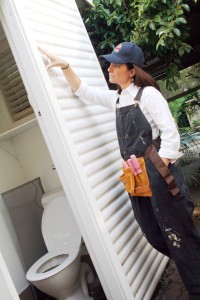 What is Asbestos?
What is Asbestos?
Asbestos is a naturally-occurring fibrous silicate mineral. It was considered a versatile product, because it is able to withstand heat, erosion and decay and has fire and water resistant properties.
It becomes a health risk when asbestos fibres are released into the air and breathed in.
Asbestos building materials is described as either “non-friable” or “friable”.
Non-Friable asbestos is any material (other than friable asbestos) that contains asbestos. Non- friable asbestos cannot be crumbled, pulverised or reduced to a powder by hand pressure when dry.
Common uses for non-friable asbestos in buildings include: flat (fibro), corrugated or compressed asbestos cement sheets; water, drainage and flue pipes; and floor tiles. To find out more visit the Asbestos Products Database.
If fire, hail, or direct activities such as water blasting and drilling damages bonded asbestos, it may become friable asbestos material.
Friable asbestos material is any material that contains asbestos and is in the form of a powder or can be crumbled, pulverised or reduced to powder by hand pressure when dry.
Friable asbestos was not commonly used in the home; it was mainly used in industrial applications such as pipe lagging, sprayed limpet and asbestos cloth and rope.
Friable asbestos can only be removed by a licenced asbestos removalist with a friable asbestos licence.
Find Out More About Managing Asbestos
Fact Sheet 1: Working Safely With Asbestos Around The Home
To learn more information about government regulations in your state visit:
Loose-fill asbestos found in homes in NSW and the ACT
Loose-fill asbestos was sold as ceiling insulation In the 1960s and 1970s, for residential and commercial premises mainly by one company trading in the ACT as Mr Fluffy. Most properties impacted are located in the ACT, a small number of properties in south east NSW have also been identified as containing this type of insulation.
SafeWork NSW is contracting an independent specialist to work with the NSW Heads of Asbestos Coordination Authorities (HACA) to help establish the scope of properties impacted by loose-filled asbestos ceiling insulation material and providing assistance to local councils and homeowners of impacted properties as well as workers who have the potential to disturb loose-fill asbestos insulation.
For information on loose-fill asbestos ceiling insulation material installed by Mr Fluffy during the 1960s and 1970s please contact Service NSW on 13 77 88 or visit the Loose-Fill Asbestos Insulation Taskforce page.
It is Important Everyone Knows About Asbestos Health Risks and Safety Requirements
- While some people may ensure they follow the regulations and safety requirements to remove small amounts of asbestos themselves, we recommend retaining a licenced asbestos removal professional who is equipped to protect you and your family from the dangers of asbestos dust.
- In Australia, a complete ban of asbestos and its products became effective in 2003.
- Most people can’t tell whether building materials contain asbestos just by looking at them. Only scientific testing of a sample of material by an accredited National Association of Testing Authorities (NATA) asbestos testing laboratory can confirm the presence of asbestos. For a NATA Lab List call 1800 621 666 or refer to their website at www.nata.com.au. When searching for an asbestos testing facility use a capital A in Asbestos.
- When working in and around the home or renovating, if in doubt, assume you are dealing with asbestos and take every precaution
- The safest way to manage the removal of asbestos is to hire a licenced asbestos removal contractor
- Where asbestos fibres are friable (loose and not bonded into building materials), only licenced friable asbestos removalists are allowed to remove it
- If you do need to work with any material that may contain asbestos, ensure you take all the necessary precautions to protect yourself and minimise the release of dust or small particles from the asbestos materials that may affect others including children
Share this information on:

